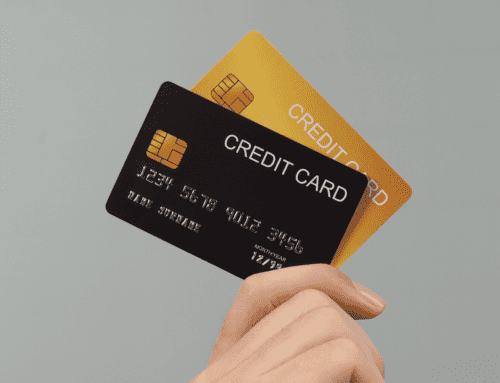
Borrowing money makes it possible to afford things that you couldn’t otherwise, but make sure you understand what you’re signing up for to avoid falling into overwhelming debt.
Paying it Back
Let’s be clear right from the beginning: when you pay for something with credit, you’re still on the hook for that money. Often, you’ll have to pay back even more because of interest. The type of credit you use and the specifics of the agreement will determine how much interest you’ll have to pay, the size and frequency of your payments, and more.
It’s extremely important to recognize that credit can be dangerous. If you borrow too much or at too high of an interest rate, you can end up owing more than something is worth or being in a position where you’re struggling to pay back everything you borrowed.
3 Types of Credit
There are three types of credit that you’ll interact with most often:
Revolving credit is a type of credit where you can borrow, pay off, and borrow again up to a predefined amount of money. At regular intervals (usually a month), you’ll need to pay back at least a minimum amount. If you don’t pay off what you borrowed completely by that time, the unpaid amount will carry over to the next billing cycle and begin accruing interest. The most common examples of revolving credit are credit cards, HELOCs, and other lines of credit.
Installment credit is a type of credit where you borrow an amount of money all at once and pay it back in predetermined chunks or installments. These regular payments could last for only a few months or multiple years. Almost all loans are examples of installment credit, so that would include car loans, mortgages, and student loans.
The final type of credit, and one that you may not even think of as credit, is open credit. This is when you use something and then pay for it afterward in regular intervals. The most common examples of open credit are bills, like for your cell phone or utilities. You use the service on credit and then pay for what you used on your next bill. These types of bills don’t usually charge interest but will add fees if the amount isn’t paid on time or in full.
Common Credit Terms
To be an informed credit user, you’ll need to understand these vocab terms.
- Annual Fee – A fee charged every year for using certain credit cards.
- Credit Limit – The total amount you can borrow at one time when using revolving credit.
- Credit Score – A number between 300 and 850 meant to show lenders how trustworthy you are. Your credit score is created based on your credit history, or how well you’ve used credit in the past.
- Default – When you don’t pay what’s owed on a debt. This can cause a few things to happen including acceleration, where the whole debt is due immediately, damage to your credit score, and your debt being sent to collections.
- Down Payment – An amount of money you pay upfront when taking out a loan for a large item like a house or car. Your down payment will go toward the cost of the item and lower the amount of money you have to borrow.
- Finance Charge – A fee charged for the use of credit. Most often this fee is a percentage of the amount borrowed. One of the most common types of finance charges is interest.
- Grace Period – The amount of time you have to pay off what you’ve borrowed before interest starts to accrue. This usually only applies to revolving credit. If you pay it all off before the next billing cycle, you won’t owe interest.
- Interest Rate – A percentage of the borrowed money that must be paid back to the lender on top of what was borrowed. The interest rate can be fixed, meaning it stays the same, or variable, meaning it changes with that market.
- Minimum Payment – The lowest amount you can pay back by a certain date in order to avoid fees.
- Principal – The amount initially borrowed for a loan.
- Term – The length of time you have to pay back the money borrowed and interest accrued on a loan.
Rules for Using Credit
These rules can help keep you out of trouble:
- Always pay off your credit card in full so that you avoid paying interest.
- Pay more than your minimum on loan payments so that you pay it off faster and pay less in interest (but be aware, some loans have early payoff penalties).
- Keep your debt to income ratio (DTI) below 28%. To find your current DTI, add up how much you pay each month in debt payments and divide it by your gross monthly income.
- Don’t borrow too much at once. It’s best to keep your credit utilization ratio, or the ratio of how much you borrow versus how much you’re approved for, under 30%. So, if your credit card has a $10,000 limit, it’s best to never borrow more than $3,000 at once.
- Try to pay at least 20% down when buying large items like a house or car. The higher the down payment, the more you own of the item. This means you won’t have to borrow as much and you’re less likely to end up owing more than it’s worth if the market changes drastically.
How you use credit will have a big impact on your life. Good credit—where you use credit wisely and follow the steps above—can allow you to buy things you couldn’t get otherwise. Bad credit—where you spend more than you can afford to pay back—will affect your ability to borrow in the future. Learn more about this process here.
While we hope you find this content useful, it is only intended to serve as a starting point. Your next step is to speak with a qualified, licensed professional who can provide advice tailored to your individual circumstances. Nothing in this article, nor in any associated resources, should be construed as financial or legal advice. Furthermore, while we have made good faith efforts to ensure that the information presented was correct as of the date the content was prepared, we are unable to guarantee that it remains accurate today.
Neither Banzai nor its sponsoring partners make any warranties or representations as to the accuracy, applicability, completeness, or suitability for any particular purpose of the information contained herein. Banzai and its sponsoring partners expressly disclaim any liability arising from the use or misuse of these materials and, by visiting this site, you agree to release Banzai and its sponsoring partners from any such liability. Do not rely upon the information provided in this content when making decisions regarding financial or legal matters without first consulting with a qualified, licensed professional.



